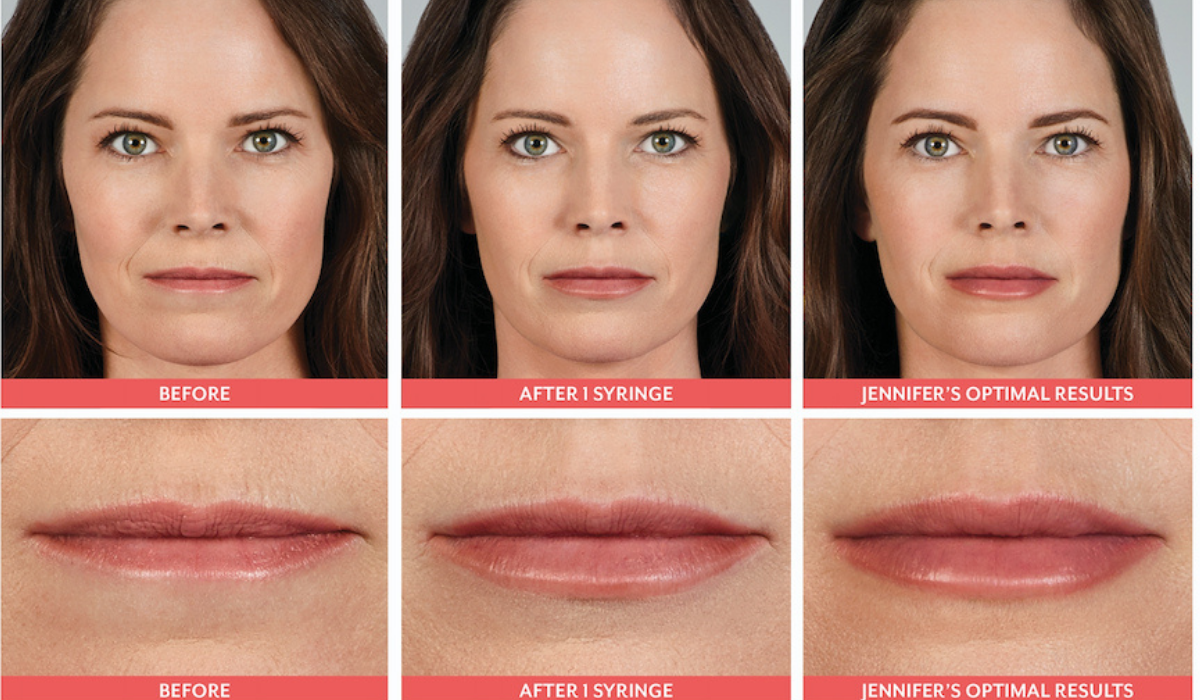In the world of aesthetic medicine, dermal fillers have become a cornerstone for addressing the visible signs of aging and enhancing facial features. Among the numerous options available, Juvéderm Ultra XC stands out as one of the most well-known and frequently used products. This article provides an in-depth, informational look at Juvéderm Ultra XC, explaining its composition, primary uses, and what individuals can typically expect from the process, all from an educational perspective.
Understanding the Science: What is Juvéderm Ultra XC?
At its core, Juvéderm Ultra XC is a dermal filler, which is a gel-like substance injected beneath the skin’s surface. Its key active ingredient is hyaluronic acid (HA). It is crucial to understand that hyaluronic acid is a substance naturally produced by the human body. It is found abundantly in the skin, connective tissues, and eyes, where its primary function is to retain water, keeping tissues well-lubricated and hydrated. As we age, the body’s natural production of HA decreases, contributing to the loss of skin volume, the formation of wrinkles, and a general reduction in skin elasticity.
Juvéderm Ultra XC utilizes a patented form of hyaluronic acid that is cross-linked. This technical term means the HA molecules are bonded together to create a stronger, more durable gel. This cross-linking is what allows the filler to provide structural support and volume for a longer period than the body’s natural, non-cross-linked HA, which breaks down in a matter of days. The “XC” in the name stands for “Xylocaine,” which is a local anesthetic (lidocaine) mixed directly into the gel. The inclusion of lidocaine is designed to enhance patient comfort during the injection process.
Primary Uses and Treatment Areas
Juvéderm Ultra XC is part of the Juvéderm collection of fillers, each tailored for specific uses and areas of the face. Juvéderm Ultra XC is specifically formulated to address moderate to severe facial wrinkles and folds. Its most common and FDA-approved application is for the correction of nasolabial folds.
Nasolabial folds are the lines that run from the sides of the nose down to the corners of the mouth. Often referred to as “smile lines” or “parentheses,” these folds become more prominent as the skin loses collagen and elasticity, and fat pads in the mid-face descend. By injecting Juvéderm Ultra XC into these folds, a skilled medical professional can restore volume, lift the tissue, and smooth out the appearance of these lines.
While the nasolabial folds are its primary indication, healthcare providers may also use Juvéderm Ultra XC “off-label” for other areas, such as augmenting the lips. However, it is important to note that the Juvéderm family includes other products, like Juvéderm Ultra Plus XC (a thicker formulation) and Juvéderm Volbella XC (specifically designed for lip refinement), which may be more suited for specific lip goals. The choice of product is a critical decision made during a consultation with a qualified provider.
The Procedure and What to Expect
The journey with any dermal filler begins not with an injection, but with a comprehensive consultation. A qualified healthcare professional—such as a dermatologist or plastic surgeon—will assess your facial anatomy, discuss your aesthetic goals, review your medical history, and determine if Juvéderm Ultra XC is the most appropriate product for you. This is the time to ask questions and set realistic expectations.
The injection process itself is relatively quick, often taking less than 30 minutes. After cleansing the area, the provider will strategically inject the gel using a fine needle or cannula. The integrated lidocaine helps to minimize discomfort. Immediately after the injection, the provider may gently massage the area to ensure the product is evenly distributed.
A key advantage of hyaluronic acid fillers like Juvéderm Ultra XC is the immediacy of the results. Patients typically see a visible smoothing of wrinkles and addition of volume right after the treatment. However, it is normal to experience some temporary side effects, including:
- Swelling
- Redness
- Tenderness
- Bruising
- Itching
These effects are usually mild to moderate and resolve on their own within a week. Providers will give specific aftercare instructions, which often include avoiding strenuous exercise, excessive heat (like saunas), and alcohol for the first 24-48 hours to minimize swelling and bruising.
Longevity and Safety Considerations
The results of Juvéderm Ultra XC are not permanent, which can be seen as a benefit for those seeking a reversible or temporary enhancement. On average, the results last for up to one year, though this can vary based on individual factors such as metabolism, lifestyle, and the area treated.
A significant safety feature of HA fillers is their reversibility. If a patient is unsatisfied with the results, a provider can inject an enzyme called hyaluronidase, which rapidly breaks down the hyaluronic acid gel, dissolving the filler.
As with any medical procedure, there are risks, though serious complications are rare when performed by an experienced, qualified professional. Potential risks include infection, asymmetry, lumps, or, in very rare cases, vascular occlusion (blockage of a blood vessel). This underscores the paramount importance of choosing a licensed and highly trained medical injector who has an in-depth understanding of facial anatomy.
Conclusion
Juvéderm Ultra XC represents a significant advancement in non-surgical aesthetic treatments. By harnessing the hydrating power of hyaluronic acid in a stabilized form, it offers a effective method for restoring facial volume and smoothing pronounced wrinkles. Its inclusion of lidocaine also reflects the industry’s focus on improving patient comfort. For anyone considering this treatment, the most critical steps are conducting thorough research, seeking a consultation with a board-certified medical professional, and maintaining open communication to ensure the outcomes align with personal aesthetic goals in a safe and effective manner.
Informational FAQs About Juvéderm Ultra XC
Q1: What is the main difference between Juvéderm Ultra XC and other Juvéderm products?
A1: The Juvéderm family includes multiple fillers with different consistencies and purposes. Juvéderm Ultra XC is designed for correcting moderate to severe wrinkles like nasolabial folds. Other products, such as Juvéderm Voluma XC, are thicker and used for cheek augmentation, while Juvéderm Volbella XC is a finer gel designed for lip enhancement and fine lines.
Q2: How long does it take to see results, and how long do they last?
A2: Results are visible immediately after injection, though the final appearance is settled once initial swelling subsides, usually within a week. The results typically last up to one year.
Q3: Is the procedure painful?
A3: Most patients report minimal discomfort. The product contains lidocaine, a local anesthetic, to help manage pain during the injection. Providers can also use additional topical numbing creams if needed.
Q4: Are the results from Juvéderm Ultra XC permanent?
A4: No. As a hyaluronic acid-based filler, the results are temporary. The body gradually and naturally metabolizes the gel over time.
Q5: What is the most important factor in having a successful treatment?
A5: The single most important factor is choosing a qualified, experienced, and licensed healthcare provider. A skilled injector’s knowledge of facial anatomy is essential for achieving natural-looking results and minimizing risks.

